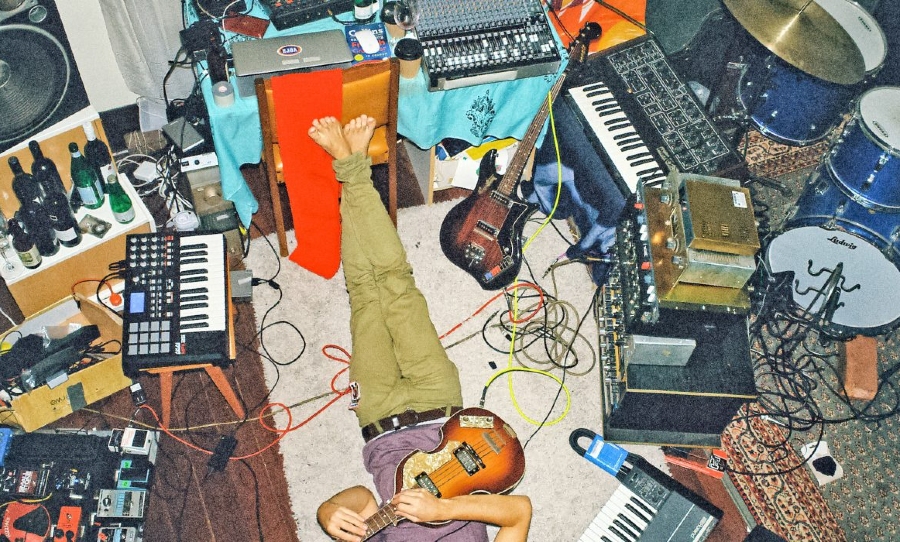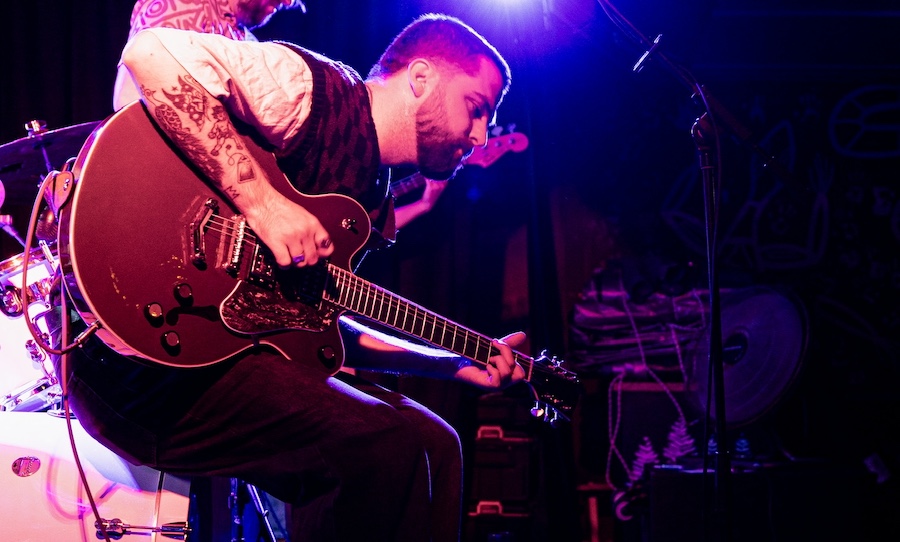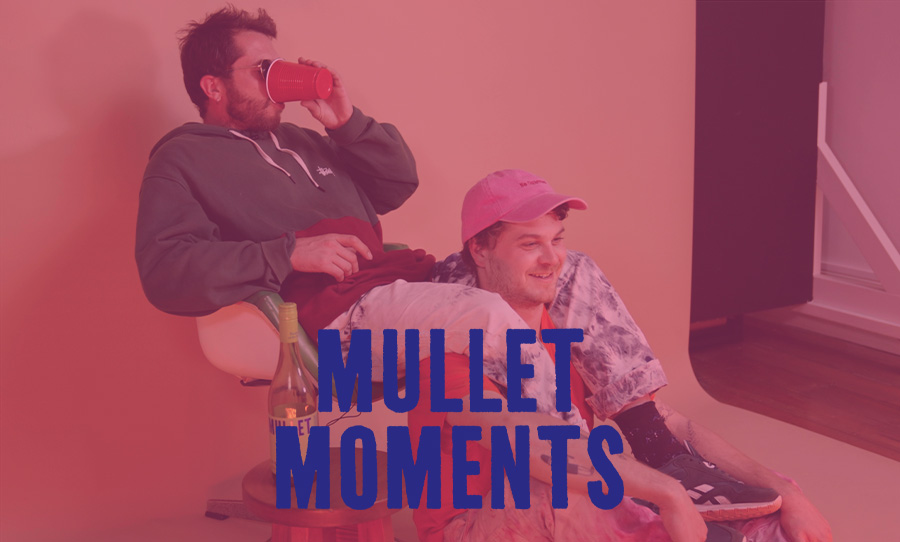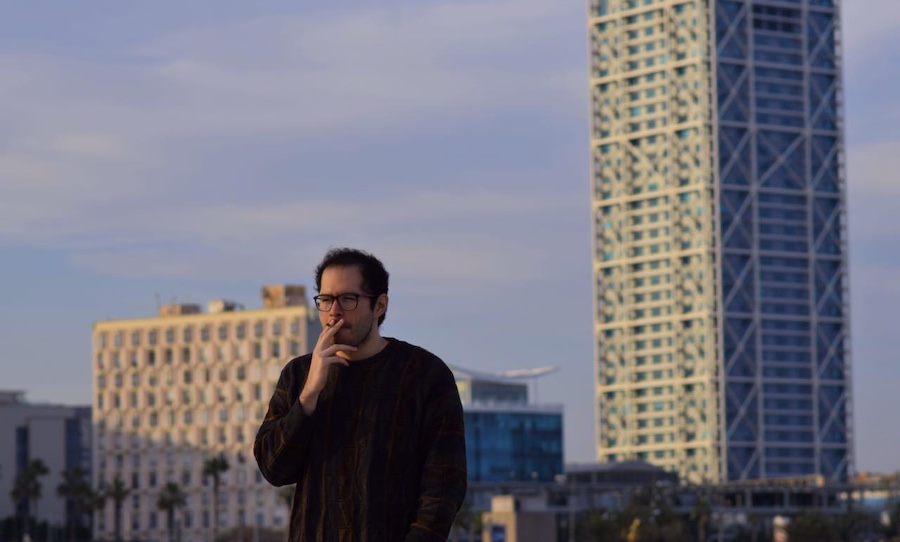Affordable music equipment, revolutionised distribution systems, and a blossoming community all created the perfect storm for DIY music to succeed while the rest of the industry struggled.
For decades, DIY artists have been the first to push the boundaries and latch onto new opportunities. Since its initial boom in the 1970s punk scene, the scrappy, get-things-done attitude of DIY music allowed for artists to be unrestricted by typical conventions of the industry. However, the style of production remained relatively underground until 2020: the year that DIY music infiltrated the mainstream.
In a year where the internet and music technology had already hit an all-time high, the sudden boom in DIY production during lockdown came as no surprise. Self-recording and production served as the perfect loophole for artists to continue creating during their time at home, with massive names even jumping on the bandwagon. So, in celebration of that, we investigate the sudden boom of DIY music and its role in sustaining the industry during the global pandemic.

The rise of DIY music
DIY music has been slowly rising over the last few years now. Home recording has become more accessible than ever, thanks to software such as Ableton and increasingly affordable equipment. Growing online communities of music fans have allowed artists to accrue cult followings. And, artists have never been more in control of the distribution and promotion of their own music.
When you turn to the Sydney scene, local bands, like Ultracrush, have been able to build a sturdy fanbase through a series of self-recorded and produced singles. Speaking to Happy Mag, Ultracrush’s Lewis Demertzi and Joshua Engstrom said that DIY recording has opened up opportunities for them to move into professional studios and that they see an increasing amount of musicians moving towards home recording techniques.
“The knowledge and experience we’ve gained from over two years of self-recording have been invaluable,” Engstrom explained, “a couple of friends of mine have been purchasing recording gear for the first time, and I’m really excited to see what these musicians create and learn from DIY recording.”
At the heart of this rise in DIY production and distribution has been Bandcamp. Dinosaur City Records founder Cody Munro Moore told us that Bandcamp was “more supportive, more interested and more approachable than any other platform. Bandcamp Fridays have only just reaffirmed that view that they are there to help DIY artists and labels.”
An initiative that the platform has been running throughout the pandemic, Bandcamp Fridays took place on the first Friday of each month and saw the distribution service wave their cut from sales across the site, giving 100% of profits directly to musicians. Many artists reported that they had made more money through this initiative than they had from streaming sites like Spotify or Apple Music in their entire career.
In fact, DIY duo 75 Dollar Bill revealed that they’d had made more money from one Bandcamp release than they had from all the streaming services combined in the last 6 years.
“We might make $100 a year from streaming. On a recent statement of mine, the royalties for one track that had 580 plays on Spotify was zero dollars and 20 cents,” band member Che Chen told Pitchfork.
The influence of Bandcamp has made it easier than ever for musicians to take their art into their own hands. With so many artists finding themselves with an abundance of time on their hands during the pandemic, the previously slow-growing online DIY communities were given a boost that’s seen their influence expand throughout the industry.
Australia Moves Indoors
Australia has had a thriving DIY scene for as long as anyone, with some of our biggest musical exports (including Kevin Parker, Flume, and Paul Kelly) having started their careers with bedroom recordings. Labels such as Dinosaur City Records and music distribution service Bandcamp have popped up as the primary breeding grounds for a local crop of DIY artists. Dinosaur City is home to Sydney bedroom pop and rock favourites Nick Griffith, Elmo Aoyama, Sunscreen, and label founder Cody Munro Moore.
Chatting to Happy Mag, Moore said DIY music is “important because it’s the music that’s mostly being created by such a large array of artists on a daily basis.”
Cody said the pandemic had spurred him on to try and write more, but he also expressed a common roadblock many artists are facing during self-isolation: “It also went the other way as well where I found myself absolutely bored by anything I tried writing mostly cause in lockdown I felt I was only doing things to keep me occupied.”
Ultracrush lead singer Lewis Demertzi expressed similar struggles: “My motivation has definitely taken a dip from having to work from home, study from home, not really experiencing new things or meeting new people—and that has meant I’m writing less.”
Despite this, an influx of exciting local DIY music has been created during the pandemic. Dinosaur City signees NOCON, recently unveiled HOAX, one of the year’s catchiest singles. HOAX was recorded remotely throughout lockdown by bandmates Jake O’Brian and Jamie Timony of These New South Whales and MOSSY fame.
Compilations like Stay Inside – Songs From the Great Indoors illustrated this breadth of young talented musicians creating from their bedrooms. The compilation saw bedroom recordings emerge from artists signed to Dinosaur City Records, as well as Osborne Again, Spunk Records, Blossom Rot Records, Hotel Motel, and Inertia Music.
Moore said the idea for the compilation came about after he and Dinosaur City’s co-founder Jordanne Chant drove back into Sydney on the eve of the lockdown: “It was a bit of an ominous drive home. Jordanne had thought or realised what was coming, that music was going to be written under the circumstances either way.”
Ranging from indie rock to pop to hip-hop, the last six months have seen boundary-pushing DIY releases from many young local musicians. Ultracrush, Congrats, Hearteyes, Pop Filter, 3NDLES5 and Crazy Mike, CHAII, Wilson’s Prom, and Stream Lea have all unveiled new releases either entirely crafted at home or else finished off there whilst self-isolating.
Even Paul Kelly returned to his DIY roots, releasing an album of home recordings made entirely during lockdown.
Bandcamp Brings The Community Together
Another piece of the DIY puzzle has been the communities’ commitment to trying to make the world a better place throughout this year. As Bandcamp began to wave their commission on music sales, artists passed on the generosity. In response to the economic downturn caused by the pandemic, the civil unrest in the US following the shooting of George Floyd, and the 2020 US presidential election, artists began donating the proceeds from their music to COVID-19 relief funds and organisations fighting for equality.
On Bandcamp, you can support new releases donating to Black Lives Matter, Cover Charge, Voting Rights Lab, Justice4Tane, and The Aboriginal Legal Service NSW – just to name a few.
Where the DIY community would have previously put on house shows or events to raise money for these organisations, the musicians congregated on Bandcamp on the first Friday of every month to do their part. Over $75 million dollars was spent on Bandcamp between March and August 2020, supporting DIY artists and being redistributed to worthy causes.
Pop Goes DIY
As recording at home became the only viable option, it was only a matter of time until popstars producing big-budget albums caught on and began to import their process into their homes. But, in saying that, pop music has been having a DIY moment for a while now.
2019’s best-selling, Grammy-sweeping, Hottest 100-winning album When We All Fall Asleep, Where Do We Go? by teenage sensation Billie Eilish was recorded and produced at home with her brother Finneas.
In an interview with AWAL, Finneas said that he’s always created music at home and that enjoys the limitations and the intimacy of home recordings.
“There’s such a private feeling to what we’re doing because we’re not at a recording studio,” he explained, “it’s our house and it’s where we live, and its where we’ve experienced everything.”
Last year’s biggest single, Lil Nas X‘s Old Town Road was also recorded from home using DIY recording gear and a beat Lil Nas found on YouTube. The song opened doors for Lil Nas X to collaborate with Nas, Billy Ray Cyrus, Young Thug, and Cardi B – and would go on to become the longest-running #1 single of all time on the Billboard Hot 100.
PC Music and hyperpop acts like SOPHIE, Hannah Diamond, and 100 Gecs have also been creating a new brand of DIY pop music. PC Music is a London label that, since 2013, has been creating boundary-pushing pop music based around high-pitched vocals, sugary sweet synths, and heavily distorted bass. The group of bedroom producers, lead by A.G. Cook, have worked with the likes of Caroline Polacheck, Sigur Ros‘ Jonsi, David Guetta, and Charli XCX.
On April 2020, whist self-isolating, Charli XCX announced she would be recording an album from her home with the help of A.G. Cook and 100 Gecs member, Dylan Brady. Cook, Brady, and Charli XCX were able to record and produce the album how i’m feeling now from their separate homes. Charli also shot the visuals for the album, including multiple music videos, from home.
The album covers the feelings of loneliness and misguidance of self-isolation as Charli shouts on the track Anthems: “I’m so bored/Wake up late, eat some cereal/Try my best to be physical/Lose myself in a TV show,” and “Finally when it’s over, we might be even closer.”
In the review of how i’m feeling now, Pitchfork’s Ana Gaca called the album Charli XCX’s “answer to questions about the viability of music in a crisis,” crowning Charli as the “most fully online pop star.”
Until July, how i’m feeling now felt like the definitive piece of self-isolated DIY pop music. That was until Taylor Swift released folklore, her new stripped-back indie-folk album recorded from her home studio with remote help from The National‘s Dessner and super-producer, Jack Antonoff. Three months on, folklore is still in the Top 10 of the Billboard 200 Album Chart after topping the chart for 5 straight weeks.
At that moment, DIY officially went mainstream.
This year has been unconventional in every sense of the word. Every industry imaginable has had to adapt, but possibly none more so than the music industry. We’ve seen countless cancelled tours and album delays. But we’ve also seen artists adapt to the new normal and discover new ways to create.
As we return back to normal, we can hope this newfound support system for DIY musicians will remain in place, and as time goes on, we see the community continue to grow and thrive.
Thanks to Cody Munro Moore and Ultracrush for talking to us for this story.



